(The original Burmese version was published on the ISP-Myanmar Facebook page on March 19, 2021.)
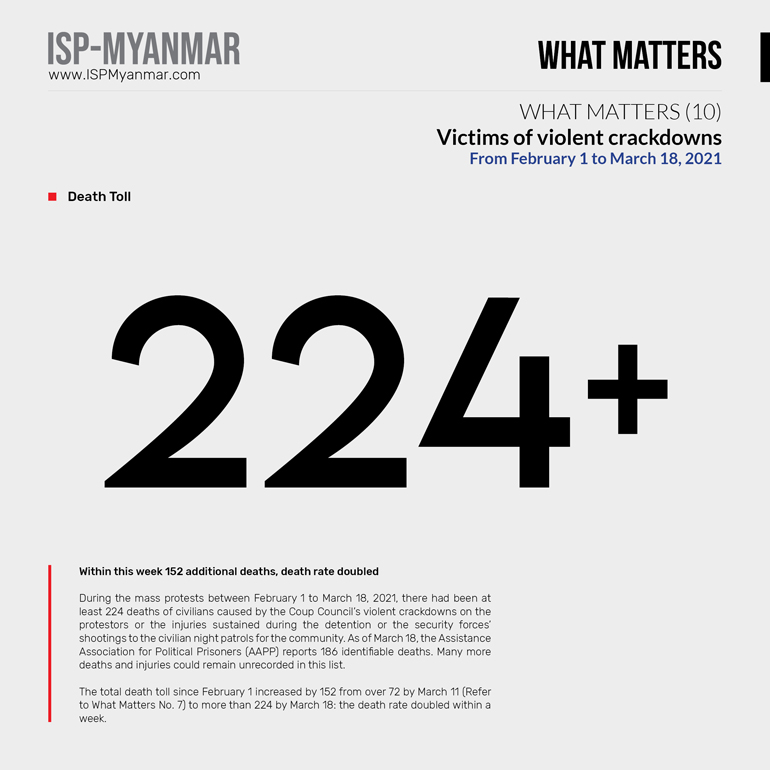
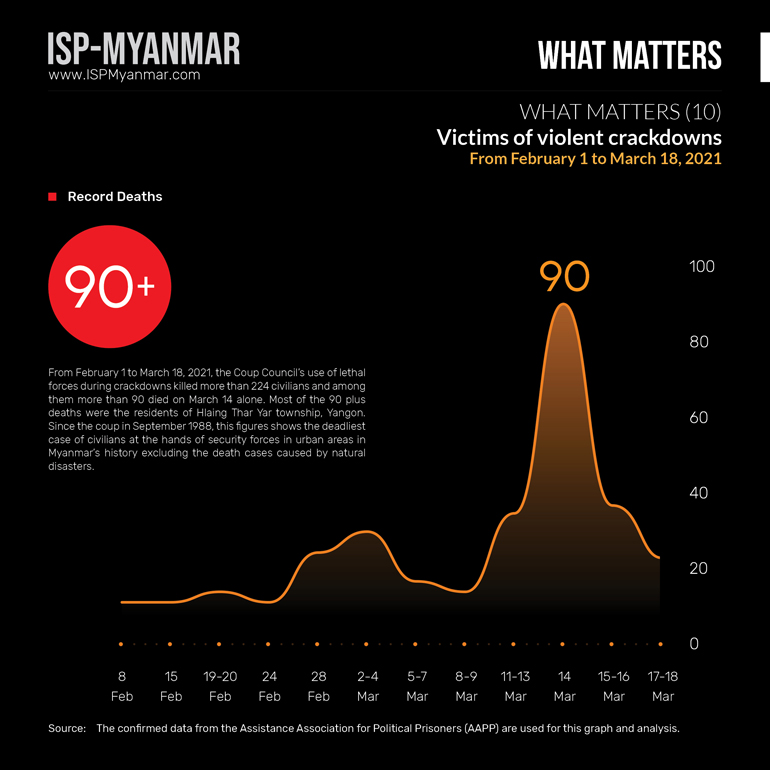
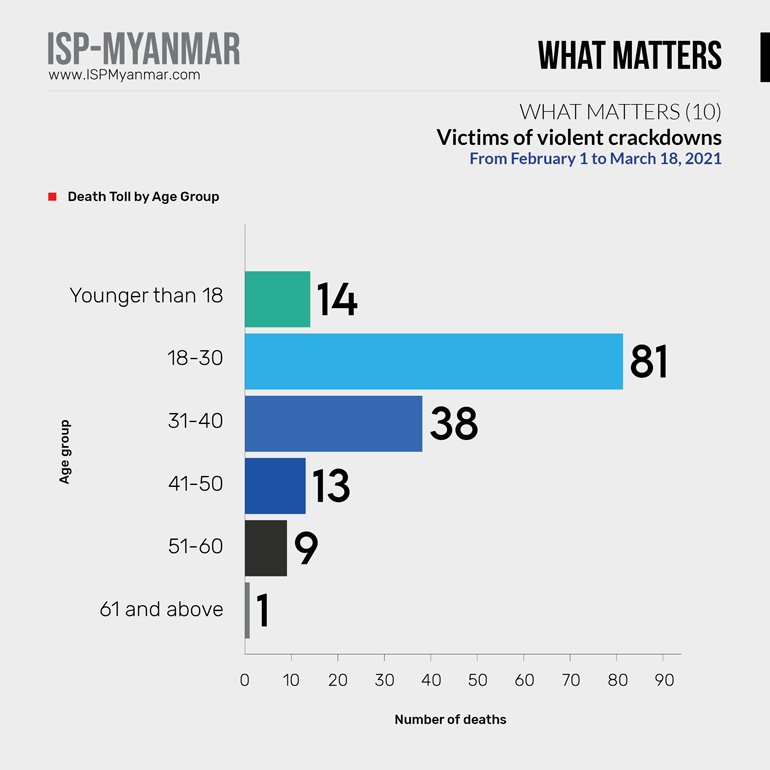
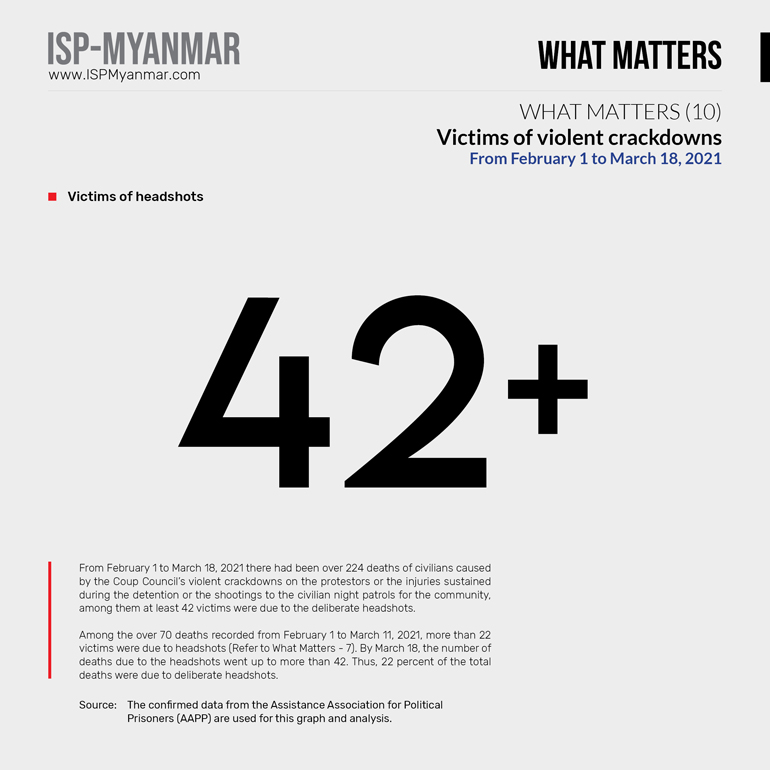
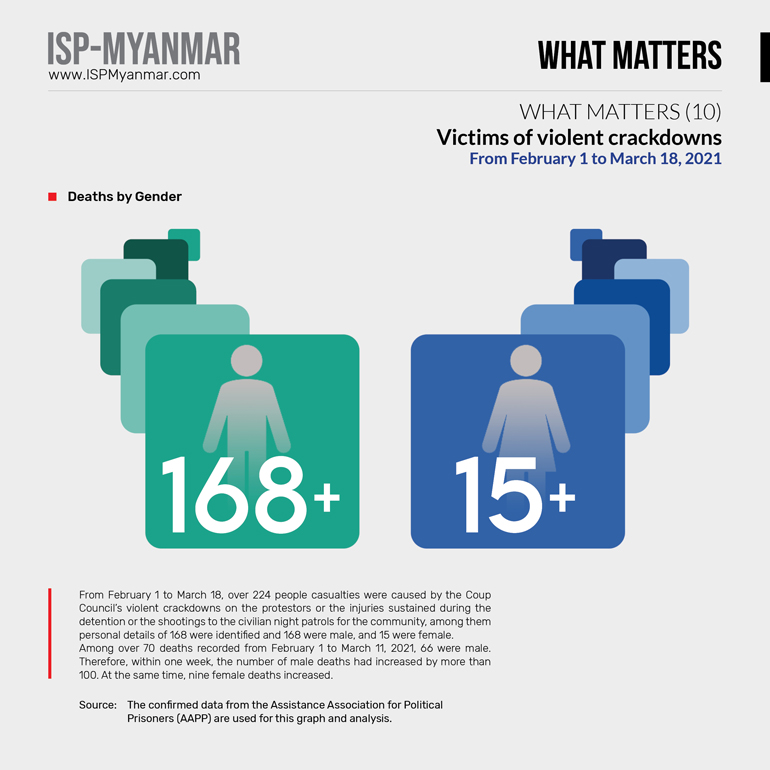
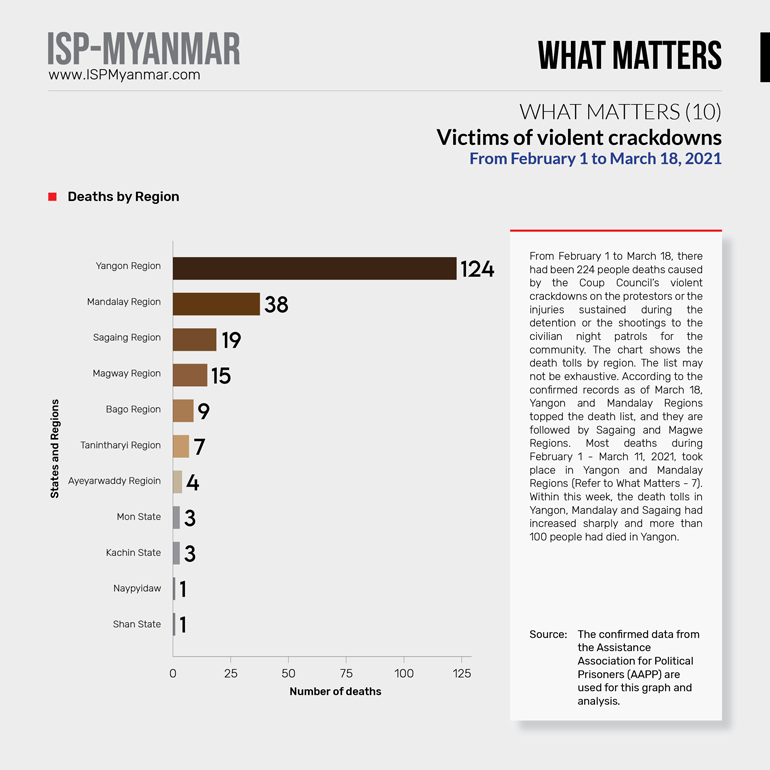
∎ Key findings in brief
Following the February 1, 2021 coup d’état, Myanmar has seen mass protests erupted across the country. As of March 18, there have been at least 224 civilian deaths because of the violent crackdowns of the coup council, injuries inflicted during custody in the detention centers, and shot dead by the security forces during the nighttime self-patrolling of the civilians for community safety. Also, many more were injured during the mass protests and, at the same time, human rights and human dignity violations committed by the security forces have been widespread. The Assistance Association for Political Prisoners (AAPP) collected personal data of the 186 deaths as of March 18, while the data of many more have yet to be collected.
Compared to the last week data (over 70 as of March 4, 2021), the death tolls increased by 150. March 14 has been the deadliest day recorded since after the February 1 military coup. On that day alone, the security forces shot and killed more than 90 civilian protesters, most of whom were residents of Hlaing Thar Yar township, western Yangon City District where the defiant mass protests took place. This figure is the highest number of civilian casualties recorded in a single day (excluding the victims of natural disasters) in Myanmar due to the junta’s violent crackdowns over popular protests since the September 1988 military coup.
In comparison to the figures mentioned in What Matters No. 7 (Burmese version published on March 12, 2021), the number of death tolls within this week has increased by more than 152. The age group of 18-30 years old are still at the top of the casualty list while that of the age group of 31-40 years old has kept increasing. Compared to the last week figures, with more than 22 additional headshot casualties this week, the number of victims of headshots reached to 42. By this week (as of March 11), the victims of headshots accounts for 22 percent of the total death tolls since the February 1 military coup. Yangon Region topped the death list with over 100 casualties in total and Mandalay Region has become the second deadliest Region of the cruel crackdown over the popular protests.
∎ Why does it matter?
By studying the number of casualties and the remaining dead bodies and body parts of the victims because of the violent crackdowns, it can be justified whether the security forces of the coup council abided by the internationally agreed rules, regulations and standards in dealing with the mass protests from the perspectives of human rights and transitional justice. Thus, it does matter to study the data collected and recorded by the AAPP.
∎ Other relevant readings:
The Assistance Association for Political Prisoners (AAPP) has recorded detailed data about the anti-coup protestors, the number and cause of death, how the security personnel has dealt with mass protests, and the reports on violations of human rights and dignity. Daily logs are also available on the AAPP website and Facebook pages. Information can also be sent to AAPP for those who are not yet on the list.
◉ What Matters ISP-Myanmar covers a section entitled “What Matters” that could benefit the current anti-coup mass movements through a series of research work. This section aims to introduce issues and data that should be addressed in a short, easy-to-read manner and accessible to everyone based on research findings. The introduced facts, cases, and data are intended to be a thought-provoking stimulus, but not as a definite view. The purpose is to make the data presented more accurate and complete. In this series, ISP would try to answer three questions in general: 1) what is the issue of concern? 2) why does it matter? 3) is it relevant for Myanmar? Addressing these questions does not involve an exhaustive examination but covers the relevant elements and claims. Thus, each issue of “What Matters” provides a list of suggested readings and references for further study. In the current situation, this section will focus on research findings related to three research topics. These are: 1) research findings related to coup d’état 2) research findings on mass movements 3) research findings on how the international community (especially powerful foreign countries that can provide significant support ) intervened in military coups and the authoritarian states. The research will be based on comparative studies. Research data collected by local partner organizations will also be requested and respectfully presented in various forms from time to time.
